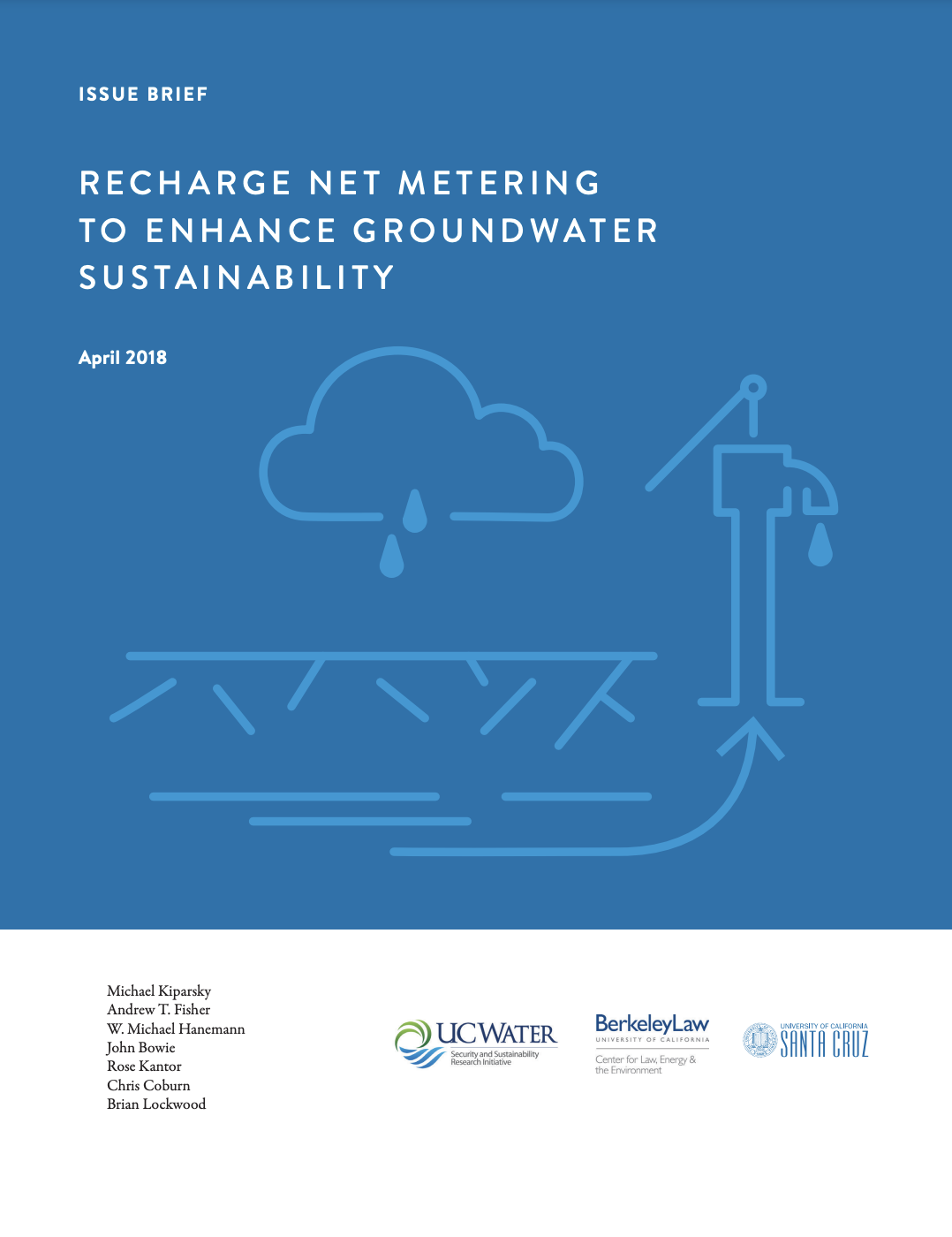Recharge Net Metering to Enhance Groundwater Sustainability
Published on by Water Network Research, Official research team of The Water Network in Academic
SEE FULL ARTICLE FROM UC, Berkeley, and UC Santa Cruz attached
 Recharge Net Metering to Enhance Groundwater Sustainability
Recharge Net Metering to Enhance Groundwater Sustainability
Groundwater sustainability depends on balancing aquifer inflows and outflows. Extraction (pumping of groundwater, typically for human use) and recharge (inflow of water to an aquifer from the land surface and streams) are central components of this water balance.
Managed aquifer recharge (MAR) is a set of techniques used to improve groundwater conditions by routing more surface water into aquifers. MAR based on the distributed collection of stormwater (“distributed MAR”) can be accomplished at an intermediate scale, generating hundreds to thousands of acre-feet/year of infiltration benefit. A key challenge for developing distributed MAR projects lies in creating incentives that will motivate landowners, tenants, and other stakeholders to participate. Distributed MAR projects can be funded by a limited number of private participants, but public benefits may accrue more broadly. Developing and implementing policies to encourage the creation and operation of distributed MAR systems is a challenge at the frontier of groundwater management.
Recharge Net Metering (ReNeM) is a strategy that incentivizes MAR by offsetting costs incurred by landowners for operation and maintenance of water collection and infiltration systems that are placed on their land. ReNeM participants benefit directly through the rebate program; they also benefit indirectly (along with other resource users and regional aquatic systems) because MAR helps to improve and sustain the supply and quality of groundwater.
ReNeM is derived from a renewable energy incentive known as Net Energy Metering (NEM), a popular model that encourages adoption of rooftop solar panels. NEM rewards customers for their onsite generation of electricity, by charging them when they draw power from the grid (such as during evening activity), and giving them a credit on their electricity bill when power flows to the grid (such as when the sun is shining and generating excess power). In a similar way, ReNeM rebates link water use to generation of supply for other purposes.
The attached brief presents a concise conceptual description of ReNeM, as well as a brief account of its first implementation as a pilot program in the Pajaro Valley of California.
The recent case study article details the institutional conditions that enable the ReNeM incentive in the Pajaro Valley.
Further research is ongoing, and additional research products will be posted on this page as they are finalized.
The Groundwater Sustainability Challenge Groundwater sustainability depends on balancing aquifer inflows and outflows. Extraction (pumping of groundwater, typically for human use) and recharge (inflow of water to an aquifer from the land surface and streams) are central components of this water balance.
Often, increasing demands for groundwater are exacerbated by stresses on limited surface water supplies. Changes in land use and shifting climate can result in less infiltration of precipitation into the ground, reducing recharge. Increasing water scarcity has led to increased pumping, and in turn, unsustainable management of groundwater in many basins, resulting in depleted supplies, degraded water quality, and other impacts. Conservation strategies have reduced demand in some basins, and there are also opportunities for increasing recharge; both strategies can help to tip the water balance towards sustainability.
Natural recharge occurs across the landscape, in forests and fields, and below rivers and streams; it is a fundamental hydrologic process that is difficult to measure or control because it varies so greatly in location and timing.
Managed aquifer recharge (MAR) is a set of techniques used to improve groundwater conditions by routing more surface water into aquifers. MAR can be applied at many scales, from street corner swales to regional systems. MAR based on the distributed collection of stormwater (“distributed MAR”) can be accomplished at an intermediate scale, generating hundreds to thousands of acre-feet/year of infiltration benefit.
The promise of distributed MAR stems from its modest cost, and comparative simplicity of design and operation. Distributed MAR projects can be developed on private or public land across a groundwater basin, potentially generating more total benefit than smaller scale installations.
Media
Taxonomy
- Aquifer Recharge
- Aquifer Recharge
- Managed Aquifer Recharge